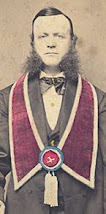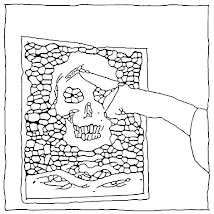In 1850 he wrote a treatise on photography that went through three more editions by 1854. And just to be sure his ideas, if not his name, would go down in history he gave instruction in photography to the likes of Charles Negre, Henri Le Secq, Emile Pecarrere, Nadar, Adrien Tournachon, and Maxime Du Camp.
I say "if not his name" because history has not awarded him a place amongst the great photographers. I venture that more people know of Nadar than LeGray. That said, for four years, he held the record for most expensive photograph at auction. In 1999, at a Sotheby's morning auction in London, one of his albumen prints sold for £419,500, a world record that held until that afternoon, when another of his prints sold for £507,500. That record held until 2003. (Now, the record holder is Andreas Gursky, whose 99 Cent II Diptychon (2001) sold for $3,346,456 in 2007.)
To round out LeGray's life: his work, during his life, was very popular. With the help of a financial backer, he opened a lavish studio which became THE place to have one's photo taken. The work he is best known for--his seascapes and some of his forest views--were made during the same period and sold very well.
Despite his apparent success, he was an artist, not a businessman and shortly found himself deep in debt. By 1860 he had fled France, his wife, his kids and his creditors, finally settling in Egypt to live out the rest of his life.

This is a handout from a show in 1978 of Le Gray's work. I can't read French so I don't know the details. The first two images are the cover and title page of an 8.25 x 11.75 inch booklet, 8 thin pages , stiff wraps, saddle-stitched. The following pages are all text.
The other two images are the front and back of a 8.25 x 11.75 inch sheet that was laid in.




The following is from a show at the J. Paul Getty, Los Angeles, in 1988. The form is an eight panel, 8 x 8.75 inche, accordian fold of not-quite card stock and not-quite paper stock.
Front panel

Second two panels









No comments:
Post a Comment